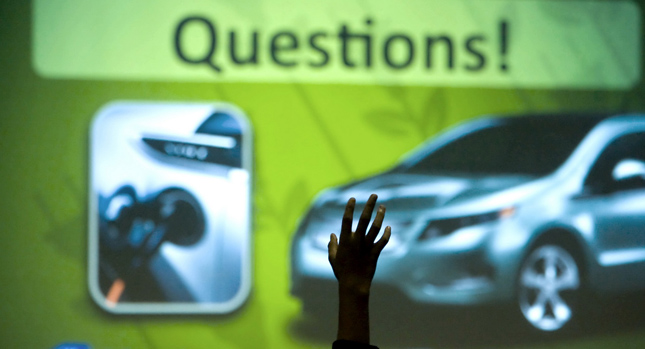Earlier this year, a Chevrolet Volt caught fire while stationary at the National Highway Traffic Safety Administration Winsconsin facility car park, three weeks after it had been subjected to a side-impact crash test on May 12.
Alerted by the incident, General Motors and NHTSA repeated the test in June, but failed to replicate the fire. GM spokesman Greg Martin had said at the time that the fire was most likely caused because the agency staff had not followed the proper safety procedures mandated by the company for handling the Volt and its battery after an accident
Nevertheless, NHTSA joined forces with the Department of Energy and the Department of Defense, as well as General Motors, to determine the safety levels of the Volt’s lithium-ion batteries.
Last week, three different tests were conducted. The first one, on November 16, did not result in a fire. However, during the second test, which took place a day later, there was a temporary temperature increase while on November 18, a few hours after the third crash test, the battery was rotated by 180 degrees – and it began to smoke and emit sparks.
NHTSA announced on November 25 that the battery used in the second test caught fire one day before at the Administration’s test facility where it was monitored since the crash test.
After this incident, NHTSA initiated a formal investigation on the subject of lithium-ion batteries that are used not only by the Volt, but also by most hybrid and EV vehicles.
The agency’s formal statement reads as follows:
“NHTSA is not aware of any roadway crashes that have resulted in battery-related fires in Chevy Volts or other vehicles powered by lithium-ion batteries. However, the agency is concerned that damage to the Volt’s batteries as part of three tests that are explicitly designed to replicate real-world crash scenarios have resulted in fire.
NHTSA is therefore opening a safety defect investigation of Chevy Volts, which could experience a battery-related fire following a crash. Chevy Volt owners whose vehicles have not been in a serious crash do not have reason for concern.
While it is too soon to tell whether the investigation will lead to a recall of any vehicles or parts, if NHTSA identifies an unreasonable risk to safety, the agency will take immediate action to notify consumers and ensure that GM communicates with current vehicle owners.”
The agency also reminded owners of hybrid or electric vehicles of the necessary precautions after an accident:
- · Consumers are advised to take the same actions they would in a crash involving a gasoline-powered vehicle — exit the vehicle safely or await the assistance of an emergency responder if they are unable to get out on their own, move a safe distance away from the vehicle, and notify the authorities of the crash.
- · Emergency responders should check a vehicle for markings or other indications that it is electric-powered. If it is, they should exercise caution, per published guidelines, to avoid any possible electrical shock and should disconnect the battery from the vehicle circuits if possible.
- · Emergency responders should also use copious amounts of water if fire is present or suspected and, keeping in mind that fire can occur for a considerable period after a crash, should proceed accordingly.
- · Operators of tow trucks and vehicle storage facilities should ensure the damaged vehicle is kept in an open area instead of inside a garage or other enclosed building.
- · Rather than attempt to discharge a propulsion battery, an emergency responder, tow truck operator, or storage facility manager should contact experts at the vehicle’s manufacturer on that subject.
- · Vehicle owners should not store a severely damaged vehicle in a garage or near other vehicles.
- · Consumers with questions about their electric vehicles should contact their local dealers.
On November 25, GM responded with its own statement, which reads as follows:
“The Volt is safe and does not present undue risk as part of normal operation or immediately after a severe crash. GM and the agency’s focus and research continue to be on battery performance, handling, storage and disposal after a crash or other significant event, like a fire, to better serve first-and secondary-responders.”
Hybrids and EVs are bound to become an increasingly common sight in the years to come. Therefore, it is only natural for both federal agencies and manufacturers to investigate possible risks posed by the novel technologies used by these vehicles.
On the other hand, as the Detroit Freep notes, National Fire Protection Association data shows that in 2010 215,500 car fires occurred in the U.S., all involving gasoline or diesel powered cars and none a hybrid or EV.
PHOTO GALLERY











